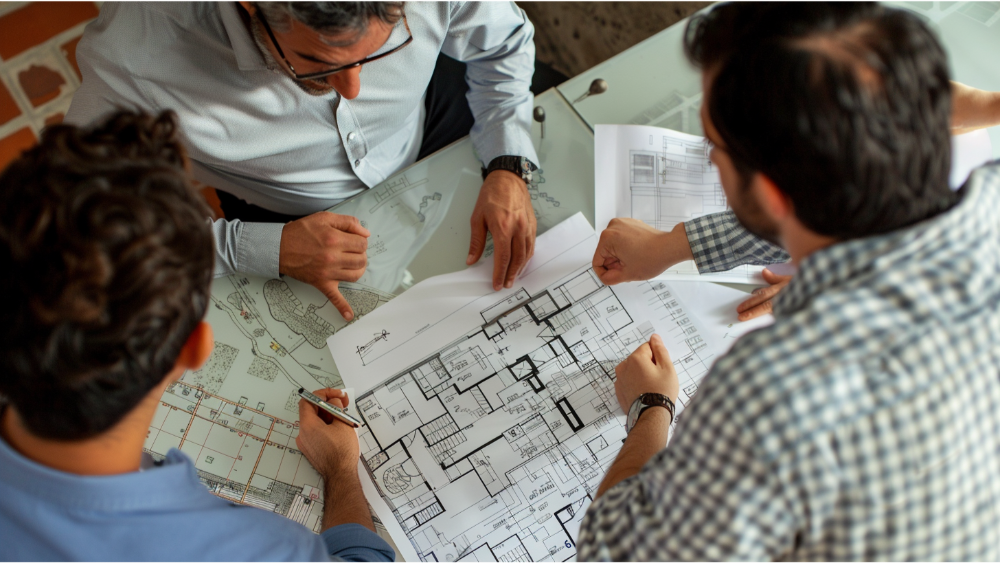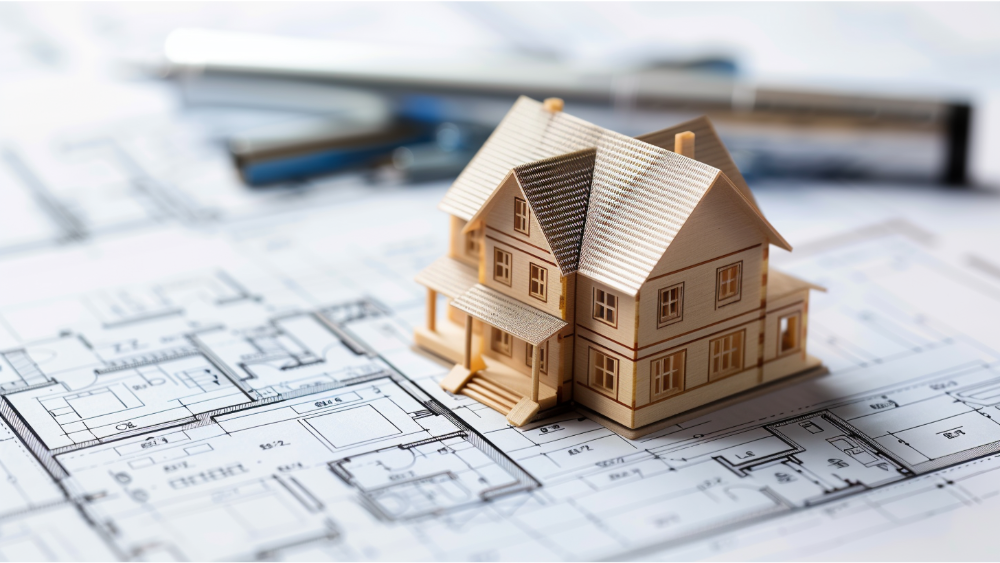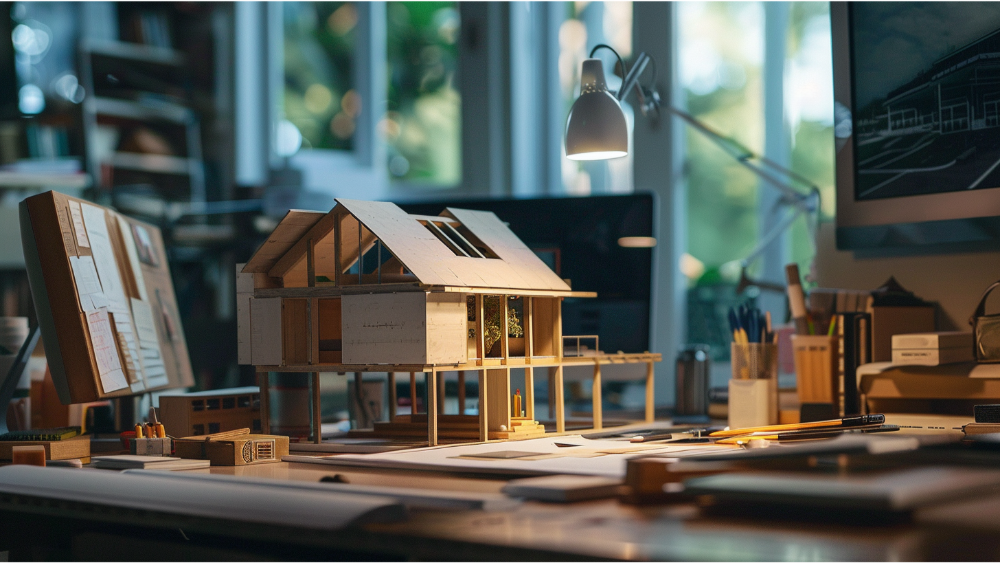
The Architectural Design Phases
In software engineering, architectural design is the process of creating a conceptual and structural representation of a system. It involves making high-level decisions about the organization and components of a software system.
The architectural design phase is an important step in the software development life cycle as it lays the foundation for the entire project.
Why are Design Phases Important?
The architectural design phase is essential for identifying and mitigating potential risks early in development. It ensures the system is designed with scalability, reliability, maintainability, and performance in mind.
By adhering to a structured design process and construction documents, it helps avoid costly changes and redesigns later in the project. This phase is vital for establishing a solid foundation for successful project execution.
Purpose of Design Phases

The purpose of design phases is to create a blueprint for the software system that outlines its structure, components, interfaces, and functionalities. This allows developers to have a clear understanding of the system and how different components will work together. It also helps to ensure that the final product meets all requirements.
Better Project Management
Design phases break down large, complex projects into smaller, more manageable tasks. This improves project management and construction administration, helping teams meet deadlines and deliver high-quality software on time. Additionally, it allows for better resource allocation and efficiency. Regular reviews during these phases ensure alignment with project goals and stakeholder expectations.
Cost-Efficiency
Identifying potential risks and making design decisions early in the process can save time and align the project scope with the client's budget. It's far more cost-effective to implement changes during the design phase rather than during development or testing stages.
Team Collaboration
The design phases involve collaboration between various stakeholders, including developers, architects, project managers, and clients. This encourages open communication and ensures that everyone is on the same page regarding the system's requirements and functionalities.
Help Manage Client Expectations
Design phases also help to manage client expectations by providing a visual representation of the system. This allows clients to have a better understanding of the project and provide feedback early on in the process.
Different Types of Design Phases

Pre-Design Project Phase
The pre-design phase is the initial stage of architectural design process. In this phase, the project requirements are analyzed, and an understanding of the problem that needs to be solved is developed. This involves gathering information from stakeholders, conducting feasibility studies, and identifying constraints and limitations.
Preliminary Design Phase
In the preliminary design phase, the conceptual design is further refined with more detailed specifications. The focus in this phase is on identifying specific hardware and software components, interfaces, and protocols. This phase also involves making decisions about the implementation of the system.
Design Development Phase
The design development phase is an iterative process that focuses on improving the system's design based on feedback from testing and user reviews. Design development may involve multiple cycles of implementation, testing, and refining to ensure that the final product meets all requirements.
Phases of Architectural Design
The architectural design phase can be divided into several distinct phases, each with its own set of objectives and activities. These phases are as follows:
Requirements Gathering

The first phase of architectural design is requirements gathering. In this phase, the architecture team works closely with stakeholders to understand the functional and non-functional requirements of the construction project. This includes identifying user needs, system goals, constraints, and any other relevant information.
System Analysis
Once the requirements are gathered, the next phase is system analysis. This involves analyzing and defining the various components and subsystems that make up the system. The architecture team considers factors such as scalability, performance, security, maintainability, and other quality attributes during this phase.
Construction Documents Phase
The construction documents phase is an additional phase in the architectural design process that involves creating detailed technical documents used by the construction team to build the system. These documents include drawings, specifications, and other instructions necessary for constructing the system accurately.
The construction documents phase may occur concurrently with the implementation planning and programming phases, as it requires input from both the architecture team and construction company.
Conceptual Design
In the conceptual design phase, the architecture team creates a high-level conceptual model of the system. This model serves as the basis for all future decisions and designs. The team, in their construction drawings, also considers various design patterns, frameworks, and technologies that could be used in the system. Careful analysis and collaboration are crucial to ensure the model aligns with the project goals and requirements.
Detailed Design

In this phase, the conceptual design is translated into more detailed technical specifications. The architecture team defines the interfaces, protocols, data formats, and other technical details of the system components. This phase also involves making decisions on which programming languages, databases, and tools will be used.
Implementation Planning
The implementation planning phase is where the architecture team creates a plan for implementing the system. This includes identifying development methodologies, project timelines, resource allocation, and risk management strategies. Clear communication channels and regular progress reviews are also established to ensure alignment. Additionally, contingency plans are developed to address potential issues that may arise.
Implementation
The implementation phase encompasses the actual coding and development of the system. In this stage, the architecture team works closely with the construction company to ensure the design meets the specified requirements and standards. Regular progress reviews are held to stay aligned and promptly address any emerging issues.
Testing and Integration

After the system has been developed, it undergoes a rigorous testing process that includes unit testing, integration testing, system testing, and user acceptance testing to identify and fix any defects or issues. This comprehensive approach ensures that every aspect of the system is thoroughly examined.
Meanwhile, the architecture team meticulously ensures that all system components work together seamlessly by integrating them, conducting compatibility checks, and performing continuous integration practices. They also monitor performance metrics to ensure optimal functionality and address any potential bottlenecks.
Deployment and Maintenance
This includes launching the system into production and offering continuous support, bug fixes, and updates as required. Implementing effective monitoring tools is crucial for maintaining system stability.
Furthermore, establishing a user feedback loop can highlight areas needing improvement. Regular training sessions for the support team can also enhance their efficiency. Additionally, maintaining clear documentation ensures that any team member can understand and manage the system effectively.
Programming Phase
The programming phase is a critical part of the implementation phase, where the actual coding and development of the system takes place. It involves writing code according to the detailed technical specifications defined in the previous phases. This phase requires strong collaboration between developers and the architecture team to ensure that the design is implemented correctly and efficiently.
Schematic Design

In addition to these main phases, there may be a schematic design phase in which the architecture team creates diagrams and visual representations of the system's structure and components.
This helps stakeholders to better understand the system and provide feedback. Effective communication during this phase is crucial for aligning the project with stakeholder expectations.
Construction Administration Phase
The construction administration phase is the final phase of architectural design phases and involves overseeing the implementation of the system. This includes monitoring progress, addressing any issues that arise, and ensuring that the final product meets all requirements. Effective communication between all stakeholders is crucial during this phase.
Frequently Asked Architectural Design Phases Questions

Can the architectural design phase be skipped?
No, skipping the architectural design phase can lead to major issues and delays in the project. It is an essential step in ensuring a successful software system.
How long does the architectural design phase usually take?
The duration of the architectural design phase varies depending on the complexity of the project. It could take anywhere from a few weeks to several months.
Who is responsible for the architectural design phase?
The architectural design phase is typically led by an architecture team, which includes software architects, designers, and developers. However, the involvement of stakeholders and other project team members may also be required.
Conclusion

The architectural design phase is a critical part of the software development process. It involves thorough planning, analysis, and design to ensure that the final product meets all requirements and standards. By following a structured approach and involving stakeholders throughout the process, the architecture team can create a solid foundation for successful implementation and deployment of the system.
Therefore, it is essential to give this phase the necessary time and resources for a successful project. So, it is crucial to understand each phase's objectives and activities to achieve the ultimate goal of delivering a high-quality software system. With proper planning and collaboration, the architectural design phase can lay the groundwork for a successful and efficient software development process.




